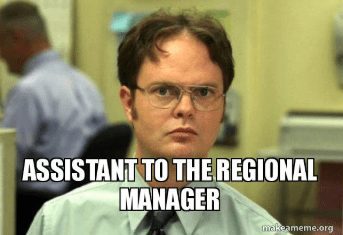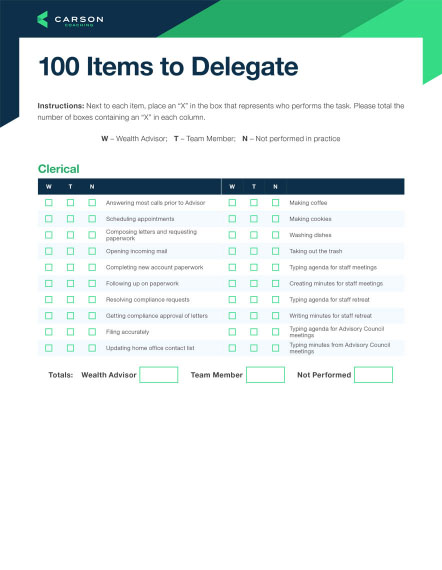If you were a coach looking to improve your struggling football team, you’d have two options:
- Bring in new people
- Invest in helping your current MVPs get better
Coaches who are trying to improve a team often find that investing in their MVPs gets them a better return on their time and energy than focusing on struggling players. A well-supported MVP has a way of lifting up the whole team, so even less-than-stellar players start improving. Firm management for financial advisors can be similar. Investing in your MVP stakeholders should be a priority for your time and energy, and you’ll find they lift the whole firm in terms of growth and morale. Self-starting, self-motivated players are worth more than roomfuls of “yes men/women,” and keeping them should be a priority.
Let’s look at what it means to be a “key stakeholder” and how you can make a plan to keep these valuable players on the field and at the top of their game.
3 Qualities of a Key Stakeholder
For the love of the game is a popular phrase in sports, and tells us something central about being a key stakeholder. Key team members work not only to get paid or gain notoriety – they work because they love the game. They are motivated to do the work and do it well, they believe in what they’re doing and have a satisfaction that runs deeper than a paycheck.
1. Vision-Oriented
Key stakeholders are naturally vision-minded – they believe in what the firm is doing and see themselves as a part of that. Their values line up with those of the firm and they see wealth management as not just affecting themselves, but the world as a whole.
2. Independent
These team members are relatively autonomous. They know what they’re responsible for, take ownership of it and get it done. They don’t see their job as a checklist of duties to get out of the way, but as a corner piece of the big picture they are trying to get done well.
3. Leadership-Minded
Key stakeholders have a leadership mindset no matter what seat they’re in. They influence others on the team to do their best and put out positive energy into the organization. They need coaching, not micro-managing, to send them running toward their goals. So, ask yourself: Do I have team members now who could run things if I had a personal crisis of some sort? If I was gone for a month, could a few of them step into place to make a plan and keep the team running until I got back? Or do they need me with them every step of the way?
Why Advisors Need Key Stakeholders
It turns out advisors are more stressed out than ever. You need a break, for the sake of your health, your home life, your firm and your team. Wise advisors – even and especially the hardest working and most successful – know they need time for R&R. You can’t work 24 hours a day, no matter how much you love the profession – you need time to reconnect and recharge. Key stakeholders make it possible for you to leave the firm completely, even in your mind while you’re gone. The true test of the strength of your firm is whether it’s standing when you’re gone, even if that’s just for a conference or a two-week vacation. Business continuity planning isn’t just for emergencies or preparing for succession. The quality of the client experience at your firm shouldn’t depend only on you but should remain constant even if you’re not there at the moment.
The 3 Pieces of a Key Stakeholder Plan
Okay, so you’ve found your key stakeholder, that diamond in the rough – how do you develop a plan to keep them “healthy, wealthy and wise”? Words of praise and general good feeling will only go so far with this caliber of MVP, so you’ll want to have a clear plan for them. Of course, the ultimate goal is to implement this kind of plan for every member of your team. But as we’ve discussed, centering key stakeholders as your priority will lift up everyone who works at your firm. You’ll notice that intimate attention is a theme throughout these elements, and that kind of relationship is only possible with one thing: your time. Your time is expensive and in short supply as an advisor-CEO – spend the lion’s share of it on this tight inner circle. Now let’s look at the details of the plan.
1. Development
What does this person want to learn – what are their interests at work? Their dream job? If you’re hoping for a team member with ownership and an independent mind, they’re most likely going to to have a restless interest in the profession and want to grow. Give them a path toward development (e.g., master mechanics of a financial plan presentation, learn this skill, get a certification, etc.) with some professional goals in mind, or give them the flexibility and support to seek this development on their own. You can also match them with a mentor who will help them hone their skills for the future.
2. Compensation
This component is obviously important. The schedule for raises and criteria to get them should be clear and reliable. The sweet spot here is to make the timing and amount of a potential raise predictable, but not easily taken for granted. Bonuses, extra paid time off (PTO) and other perks also help to make a positive culture in which accomplishment and discretionary effort are recognized promptly. In the long game, there should be a path to earning shares to encourage the kind of autonomous ownership that turns great stakeholders into key ones.
Most importantly, don’t be cheap. Never put your firm at risk for a key stakeholder to be poached over something like $5,000 or whatever “above average” is. Never, never, never. Loss of a key stakeholder can cost you an untold sum in loss of client confidence, upheaval of productivity and damaged team morale – not to mention starting the dreaded recruiting process all over again.
3. Career Path
Working out a career path for stakeholders can be tricky, especially if you’re in a smaller firm with fewer jobs available. But you should still engage the question, especially for key team members who could be head-hunted by your competition. Changes in title (junior advisor to advisor to managing partner), changes in compensation, and increasing complexity and trust of client-relationships will send the message to your MVP that they are indeed most valued. Just make sure the change in title is meaningful and not a Dwight Schrute situation.
The kind of key stakeholder you want will see the value in being given a $30 million client-relationship to manage rather than a simple $5,000 bonus.
Speak their Language
Before, during and after this process you need to be asking your key stakeholders what their professional “love language” is. How do they like to be compensated? How do they like to be coached? Some stakeholders need a fair amount of verbal praise and would like to convey regularly to you what they’re working on. They may feel neglected if you don’t regularly talk through what their day or week looks like. To some – I will assert many – stakeholders, this engagement with you is more important than compensation. Other team members won’t want to be checked in on unless something’s wrong. If they see you at their door, they will assume their work is being questioned. Most people fall somewhere between these two extremes.
The language of compensation is also its own dialect. Some stakeholders won’t quite see the value until they see the bonus line on their check, some stakeholders would prefer extra PTO. Someone with a large, complex family situation (kids in high school, all different activities) may appreciate flex time so they can accomplish a busy schedule. Find out – ask. This area is one of the most neglected by many leaders (because it’s about intangible “squishy stuff”). But, getting it right is one of the best, most inexpensive investments you can make for a big return.
Coaching Your All-Star
You need to approach coaching or performance evaluations for key stakeholders very carefully. Hopefully, at that point, whether it’s a one-on-one or a performance review, you know how to speak to them clearly. Key stakeholders don’t like to be treated as just another “employee” – you need to approach them with respect and space for their decision-making. Give them destinations, don’t tell them how to make the trip unless they ask. If they’re not making their goals, that’s when the conversation should happen, but approach gently. Query for background information about what’s going on before you just dive in with a negative, “Hey, I’ve been noticing something’s off with you.” Maintain a tone that you’re on the same side – theirs. Never be patronizing, condescending (“I the boss am up here, you’re down there”) or judgmental.
Just be human. It’s not about you. Believe the best about that person. Talk it out and create the plan for what’s next together. Key stakeholders (and others) value dignity and your respect.
Your MVPs are a Slam Dunk Investment
As an advisor-CEO, you’re watchdog and sheepdog at the same time. You keep the group going in a certain direction and watch for danger while letting them run on their own strength and only intervening when you have to.
Your key stakeholders have a naturally infectious energy that will help your firm grow and develop without you having to provide all that energy yourself. Keep them in sight, and keep them on the team, even if it takes a little extra effort on your part. Whether or not it’s your favorite part of your job, it’s worth the investment in the end.



